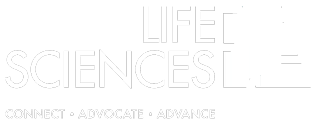By Elizabeth Kay
Compliance and Retention Analyst for AEIS, UBA Partner Firm in San Mateo, CA
 According to new information from United Benefit Advisors (UBA), health savings accounts (HSAs) are outpacing health reimbursement arrangements (HRAs) in both adoption and participation rates. And now that metal tier health plans [e.g., platinum, gold, silver, etc.] are allowed higher deductibles, employers are increasingly looking at HSA qualified plans for their upcoming plan year. Here’s a look at why this trend is unfolding.
According to new information from United Benefit Advisors (UBA), health savings accounts (HSAs) are outpacing health reimbursement arrangements (HRAs) in both adoption and participation rates. And now that metal tier health plans [e.g., platinum, gold, silver, etc.] are allowed higher deductibles, employers are increasingly looking at HSA qualified plans for their upcoming plan year. Here’s a look at why this trend is unfolding.
The rising costs of health insurance are directly related to the rising cost of health care. One of the contributing factors has been consumers saying ‘yes’ to tests or procedures that they might not really need — but because the insurance companies were paying for them, they may not have been motivated to say ‘no’.
Consumer-Driven Health Plans (CDHPs) were designed to A) make plans more affordable; and B) help the consumer make better, more informed decisions about their health care since they would be paying the first thousand dollars or more of their claims. While the strategy was great, in the small group marketplace, when HSA plans were first introduced, it sort of backfired.
The reason it backfired was that the premiums were so affordable, an employer could move their plan to an HSA plan, fund most or all of the deductible for the employees, and still save on costs of administering their benefit plan. In this scenario, however, employees were still spending money that was not from their own pocket. The resulting claims experience on HSA plans went up higher than projected, and so did the premiums.
Then came ‘hybrid’ PPO plans that had a high deductible but came with an office and pharmacy copay as first dollar benefits (not subject to the deductible). Some carriers allowed an employer to ‘wrap’ an HRA administered by a third party administrator (TPA) around these plans so that the employer could still fund a portion of the deductible to make the overall plan more affordable for their employees and their families.
Unfortunately, this strategy has not always done well, either. Many carriers would only allow an employer to ‘wrap’ an HRA with certain plans in their portfolios that had been rated accordingly. However, as explained earlier, when an employer funds most or all of the deductible, the carrier may see higher claims than were projected because employees are not acting as better consumers facing the loss of their own money. The result: carriers may not have collected enough premiums to cover the losses if the plan was not originally rated with this in mind.
For example, Aetna small group in California had originally allowed all of their 2014 plans to be ‘wrapped’ with an HRA. Some TPAs were claiming they could take a bronze level plan and turn it into a platinum plan with the Aetna bronze plans wrapped in an HRA. However, Aetna quickly changed their mind and as of March 31, 2014, no longer allows any of their plans to be ‘wrapped’ with an HRA. In fact, they now require the employer to sign a Statement of Understanding declaring that they are not funding any of the deductible unless it is an HSA plan, and they are funding to a qualified HSA account. Most high deductible plans are rated with the assumption that claims will be less frivolous overall than a low deductible PPO plan, and the insured will be careful in their spending. I suspect that Aetna’s quick change was due to large claim losses in the beginning of 2014.
The flip side to an employer implementing a CDHP or an HSA plan with a high deductible, and not funding any portion of the deductible, is that some of their workforce may not be able to afford the new plan. It can be a fine line between what is affordable for the employer, and what’s affordable for the employees and their families. This is one way that benchmarking with the health plan survey data can be so beneficial, in that you can see what others in your industry are doing. Having an educated advisor to help you develop a benefits plan that contains affordable plans for the entire workforce can be invaluable and aid in employee retention.
Finally, educating employees is so essential with any health plan, but especially with a CDHP/HSA/HRA plan because an employee may look at a high deductible plan and immediately think, this is unaffordable. However, with an HSA plan for example, the employee can set aside funds into an HSA account that’s federally tax-free (and depending on the state, tax-free there as well). This could virtually reduce their taxable income to a point where the plan becomes more affordable and, therefore, more appealing to the employee.
Also, explain to your employees who are over age 55 that they can make an additional $1,000 annual contribution to their HSA account to save for retirement because HSA funds can be used to pay Medicare Part B & D premiums and pay for medical expenses. With this new information, you’ll see their eyes change as the light bulb goes on! The way the plan is received and utilized makes a huge difference in perception.
For a copy of UBA survey findings showing many differences in HSA/HRA funding levels regionally and across industries, download a copy of the 2013 UBA Health Plan Survey Executive Summary at http://bit.ly/PSEFrx, or request a custom benchmarking report targeted to your business.
For a comprehensive guide on employee benefits communication strategies, download the UBA whitepaper, “A Business Case for Benefits Communications” at http://bit.ly/1gJR3GE.





